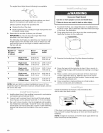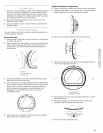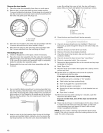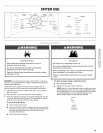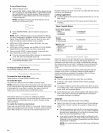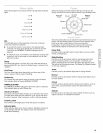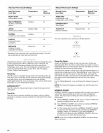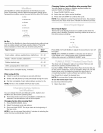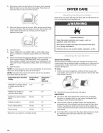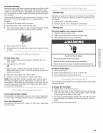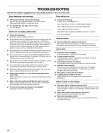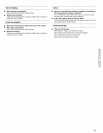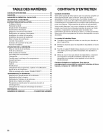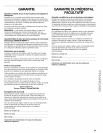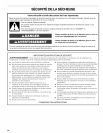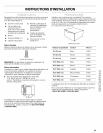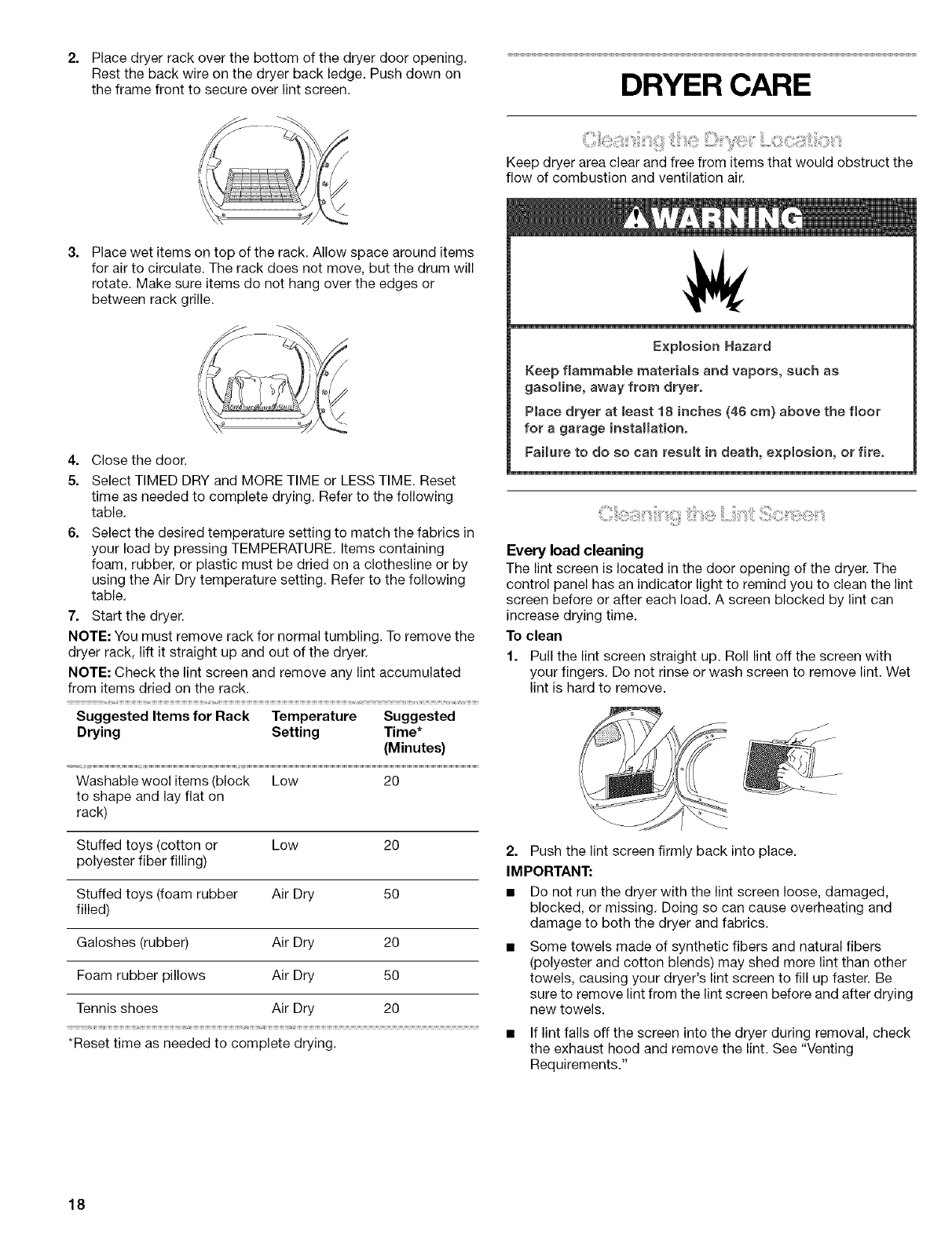
2. Place dryer rack over the bottom of the dryer door opening.
Rest the back wire on the dryer back ledge. Push down on
the frame front to secure over lint screen.
DRYER CARE
3=
Place wet items on top of the rack. Allow space around items
for air to circulate. The rack does not move, but the drum will
rotate. Make sure items do not hang over the edges or
between rack grille.
4. Close the door.
5. Select TIMED DRY and MORE TIME or LESS TIME. Reset
time as needed to complete drying. Refer to the following
table.
6. Select the desired temperature setting to match the fabrics in
your load by pressing TEMPERATURE. Items containing
foam, rubber, or plastic must be dried on a clothesline or by
using the Air Dry temperature setting. Refer to the following
table.
7. Start the dryer.
NOTE: You must remove rack for normal tumbling. To remove the
dryer rack, lift it straight up and out of the dryer.
NOTE: Check the lint screen and remove any lint accumulated
from items dried on the rack.
Suggested Items for Rack Temperature Suggested
Drying Setting Time*
(Minutes)
Washable wool items (block Low 20
to shape and lay flat on
rack)
Stuffed toys (cotton or Low 20
polyester fiber filling)
Stuffed toys (foam rubber Air Dry 50
filled)
Galoshes (rubber) Air Dry 20
Foam rubber pillows Air Dry 50
Tennis shoes Air Dry 20
*Reset time as needed to complete drying.
Keep dryer area clear and free from items that would obstruct the
flow of combustion and ventilation air.
Explosion Hazard
Keep flammable materials and vapors, such as
gasoline, away from dryer.
Place dryer at least 18 inches (46 era) above the floor
for a garage installation.
Failure to do so can result in death, explosion, or fire.
Every load cleaning
The lint screen is located in the door opening of the dryer. The
control panel has an indicator light to remind you to clean the lint
screen before or after each load. A screen blocked by lint can
increase drying time.
To clean
1. Pull the lint screen straight up. Roll lint off the screen with
your fingers. Do not rinse or wash screen to remove lint. Wet
lint is hard to remove.
2. Push the lint screen firmly back into place.
IMPORTANT:
• Do not run the dryer with the lint screen loose, damaged,
blocked, or missing. Doing so can cause overheating and
damage to both the dryer and fabrics.
Some towels made of synthetic fibers and natural fibers
(polyester and cotton blends) may shed more lint than other
towels, causing your dryer's lint screen to fill up faster. Be
sure to remove lint from the lint screen before and after drying
new towels.
• If lint falls off the screen into the dryer during removal, check
the exhaust hood and remove the lint. See "Venting
Requirements."
18



